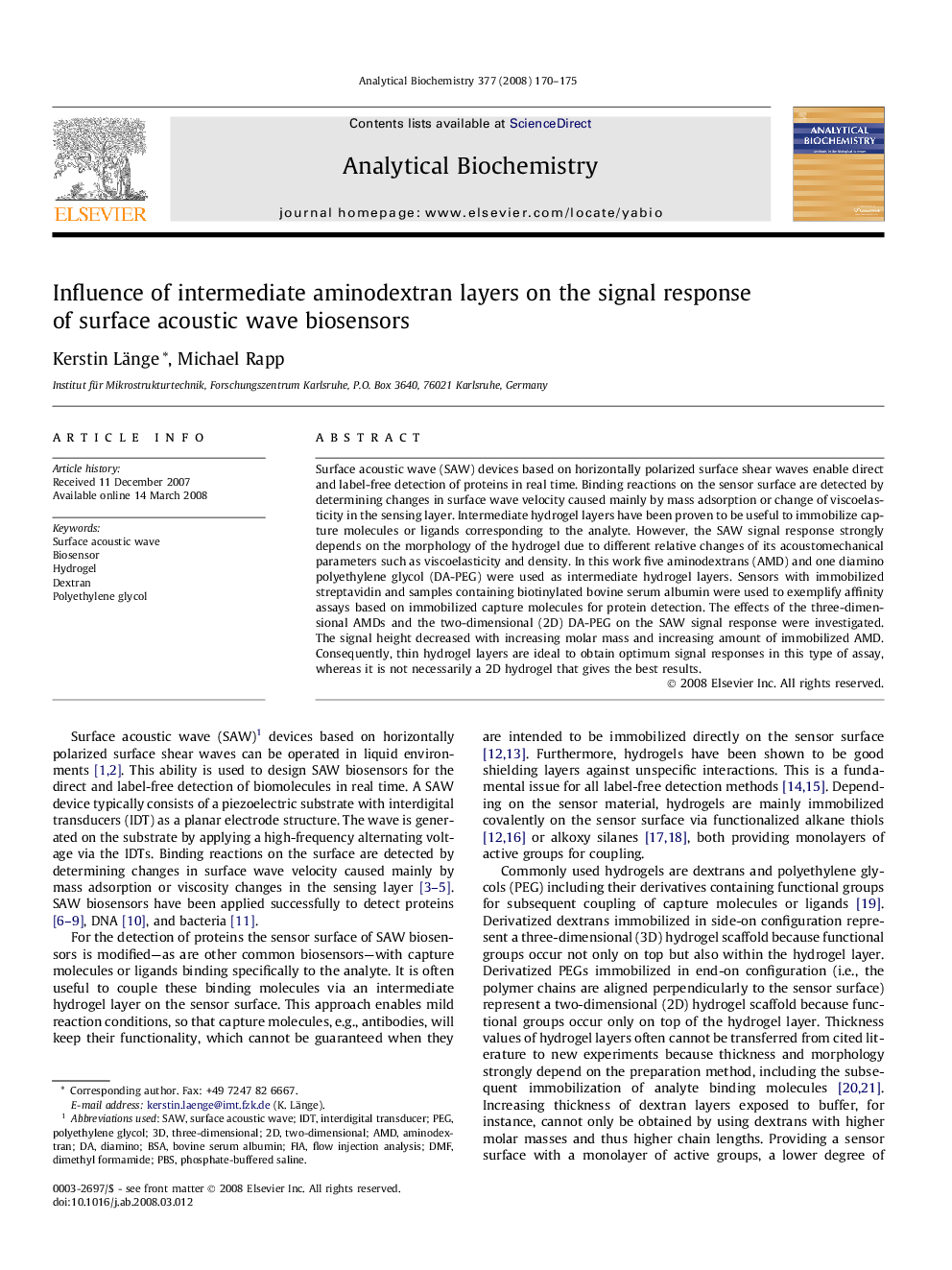| کد مقاله | کد نشریه | سال انتشار | مقاله انگلیسی | نسخه تمام متن |
|---|---|---|---|---|
| 1176336 | 961844 | 2008 | 6 صفحه PDF | دانلود رایگان |

Surface acoustic wave (SAW) devices based on horizontally polarized surface shear waves enable direct and label-free detection of proteins in real time. Binding reactions on the sensor surface are detected by determining changes in surface wave velocity caused mainly by mass adsorption or change of viscoelasticity in the sensing layer. Intermediate hydrogel layers have been proven to be useful to immobilize capture molecules or ligands corresponding to the analyte. However, the SAW signal response strongly depends on the morphology of the hydrogel due to different relative changes of its acoustomechanical parameters such as viscoelasticity and density. In this work five aminodextrans (AMD) and one diamino polyethylene glycol (DA-PEG) were used as intermediate hydrogel layers. Sensors with immobilized streptavidin and samples containing biotinylated bovine serum albumin were used to exemplify affinity assays based on immobilized capture molecules for protein detection. The effects of the three-dimensional AMDs and the two-dimensional (2D) DA-PEG on the SAW signal response were investigated. The signal height decreased with increasing molar mass and increasing amount of immobilized AMD. Consequently, thin hydrogel layers are ideal to obtain optimum signal responses in this type of assay, whereas it is not necessarily a 2D hydrogel that gives the best results.
Journal: Analytical Biochemistry - Volume 377, Issue 2, 15 June 2008, Pages 170–175